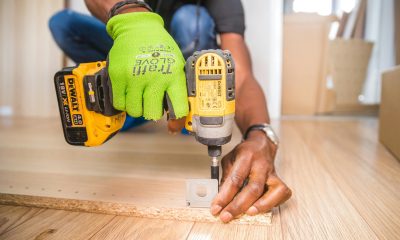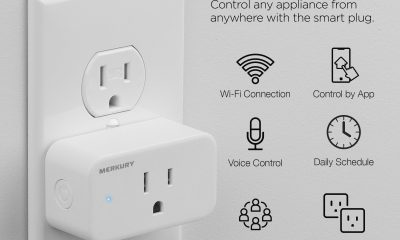Guides
How to Pick the Best Flooring for Your Home?

Choosing the right flooring can completely transform the look, feel, and function of your home. It’s not just about style it’s also about durability, comfort, maintenance, budget, and how well the material fits your lifestyle. With so many options on the market today, from hardwood and tile to vinyl, laminate, and carpet, making the right choice can feel overwhelming.
This guide by Flooring Titan will walk you through a step-by-step process to help you pick the best flooring for your home. Whether you’re renovating a single room or upgrading your entire space, this article provides practical, expert-backed advice to help you feel confident in your decision.
Step 1: Understand How Each Room Functions
The best flooring choice depends largely on how the room is used. Ask yourself the following questions:
- Does the room experience heavy foot traffic?
- Will it be exposed to moisture, spills, or humidity?
- Do kids or pets use the space regularly?
- Do you want a cozy, warm feel or something cool and sleek?
Examples:
- Kitchen: Needs water resistance, durability, and easy cleaning.
- Living room: Style and comfort matter most, especially if it’s a gathering area.
- Bathroom or laundry room: Must be waterproof and slip-resistant.
- Bedroom: Focus on comfort and warmth.
- Basement: Choose materials that handle moisture well.
Understanding each space’s function helps narrow your flooring options right away.
Step 2: Choose Flooring Based on Durability and Lifestyle Needs
Your lifestyle plays a big role in flooring performance. If you have pets, young children, or a busy household, choose flooring that can take a beating without showing wear.
Best flooring by durability needs:
- High traffic and pets: Luxury vinyl plank (LVP), tile, or laminate with strong wear layers.
- Low-traffic rooms: Hardwood, carpet, or cork can work well.
- Moisture-prone spaces: Go with waterproof options like tile, vinyl, or waterproof laminate.
- Eco-conscious homeowners: Consider bamboo, cork, or sustainably sourced hardwood.
Look for flooring rated for wear resistance (such as AC ratings for laminate) or labeled as waterproof or water-resistant.
Step 3: Consider Comfort and Feel Underfoot
Different materials offer different levels of comfort. Some are firm and cool, while others are warm and cushioned.
- Soft feel: Carpet and cork are ideal for bedrooms or playrooms.
- Warm and natural: Hardwood and engineered wood provide a cozy feel and elegant look.
- Firm and smooth: Tile and vinyl are easy to clean but less forgiving on feet.
- Sound absorption: Carpet and cork reduce noise, making them great for upper floors or multi-family homes.
Comfort can also be improved with underlayments, so consider how much padding or insulation you want beneath the surface.
Step 4: Match the Flooring to Your Style and Design Goals
Your floor acts as a foundation for your interior design, so it should complement your furniture, wall colors, and decor style.
Popular design considerations:
- Rustic or farmhouse look: Wide plank hardwood, distressed wood, or wood-look vinyl.
- Modern or industrial: Polished concrete, large format tile, or sleek LVP.
- Traditional or classic: Oak or walnut hardwood, herringbone patterns.
- Coastal or casual: Whitewashed wood, light oak, or bleached laminate.
Look at samples in your lighting conditions, and bring swatches of your wall paint or fabric to see how they pair together.
Step 5: Know Your Budget and Installation Costs
Budgeting isn’t just about the cost per square foot. Consider installation, underlayment, removal of old flooring, delivery fees, and potential repairs or prep work on subfloors.
Average flooring costs (materials only):
- Vinyl plank: $2 to $5 per sq. ft.
- Laminate: $2 to $6 per sq. ft.
- Hardwood: $6 to $15 per sq. ft.
- Engineered wood: $4 to $10 per sq. ft.
- Tile: $4 to $12 per sq. ft.
- Carpet: $2 to $7 per sq. ft.
Installation tip: Some materials like luxury vinyl and laminate are DIY-friendly, which can reduce your overall spend. Hardwood and tile often require professionals due to more complex tools and techniques.
Step 6: Evaluate Maintenance Requirements
Each flooring type has its own cleaning and upkeep needs. Consider how much time and effort you’re willing to invest.
Low-maintenance options:
- Vinyl
- Laminate
- Tile
Medium to high maintenance:
- Hardwood (requires sweeping, polishing, occasional refinishing)
- Carpet (requires vacuuming and deep cleaning)
- Natural stone (may need sealing)
Ask about cleaning products and long-term care before committing. Also, think about stain resistance, scratch resistance, and fade resistance—especially in sunlit areas.
Step 7: Think About Long-Term Value and Resale Impact
Some flooring options increase your home’s resale value more than others. If you plan to sell in the future, this could influence your choice.
Best options for resale:
- Solid hardwood
- Engineered wood
- Natural stone tile
Buyers often see these materials as premium, which can boost your home’s appeal. On the other hand, vinyl and laminate may not carry the same prestige, even if they perform well.
Still, don’t sacrifice comfort and function just for resale—choose what you will enjoy living with every day.
Step 8: Compare Samples in Your Home Environment
Lighting plays a major role in how a floor looks. Visit a flooring showroom and take samples home. Observe them in natural daylight, artificial light, and different times of day.
Check how they look next to baseboards, furniture, and walls. Feel them underfoot with bare feet, socks, and shoes. This step helps prevent surprises and ensures your choice feels just right.
Step 9: Don’t Forget About Transitions and Trim
Flooring doesn’t exist in isolation. Transitions between rooms, stair nosings, and trim moldings matter too.
Make sure your flooring option has matching accessories. For example, luxury vinyl often comes with coordinating stair treads, thresholds, and quarter rounds. Hardwood installations may need custom-stained trim to match.
A seamless finish elevates the entire look of your floor and avoids awkward transitions between different materials.
Step 10: Work with a Trusted Flooring Specialist
Even with all the research in the world, talking to a local flooring expert can provide clarity. A specialist can:
- Help you compare samples and prices
- Offer recommendations based on your subfloor or room conditions
- Provide installation advice
- Suggest alternatives within your budget
Professional insights ensure you avoid costly mistakes and choose a floor that truly fits your home’s needs.

Choosing the right flooring can completely transform the look, feel, and function of your home. It’s not just about style, it’s also about durability, comfort, maintenance, budget, and how well the material fits your lifestyle. With so many options on the market today, from hardwood and tile to vinyl, laminate, and carpet, making the right choice can feel overwhelming.
I’m Ali, founder of Smart Home Living Insider, and this guide is built on personal experience, not just surface-level research. I’ve been through the decision-making process myself, worked on renovation projects, compared materials in real homes, and talked with flooring experts to understand what truly works. My goal is to give you practical, honest advice that makes the flooring process easier, clearer, and more confident without the guesswork. Everything here is written with your everyday needs in mind, based on what I’ve tested and learned firsthand.
This guide by Flooring Titan will walk you through a step-by-step process to help you pick the best flooring for your home. Whether you’re renovating a single room or upgrading your entire space, this article provides practical, expert-backed advice to help you feel confident in your decision.
Final Thoughts: Choosing Flooring That Works for You
The perfect flooring combines beauty, performance, and practicality. Whether you fall in love with the rich elegance of hardwood, the waterproof convenience of vinyl, or the soft comfort of carpet, the right choice reflects your lifestyle and your home’s personality.
Take your time, compare options side by side, and think about how you use each space. When function and style align, your flooring will serve you beautifully for years to come.
By following these steps, you’ll avoid common pitfalls and make a smart investment that transforms your space one room at a time.
-

 Gadgets3 years ago
Gadgets3 years agoDoes Nest Thermostats Contain Cameras Or Microphones? Is It Safe For you?
-

 Guides1 year ago
Guides1 year ago10 Best Apps To Control All Your Smart Home Devices.
-

 Gadgets3 years ago
Gadgets3 years agoWhat Is The Purpose Of Red Button On The SimpliSafe Keypad?
-

 Gadgets3 years ago
Gadgets3 years agoComplete Guide About Equalizer settings for Samsung-Soundbar
-

 Accessories2 years ago
Accessories2 years agoBlink Camera’s Temperature Sensor Settings, and More
-

 Gadgets3 years ago
Gadgets3 years agoFitbit Symbols Meaning: What Do The Fitbit Icons Mean?
-

 Accessories2 years ago
Accessories2 years agoCan Siri Control Samsung Televisions And Are Samsung TVs Homekit Compliant?
-

 Solutions3 years ago
Solutions3 years agoWhy is My Samsung TV Picture So Dark? Exploring the Possible Causes























































































































